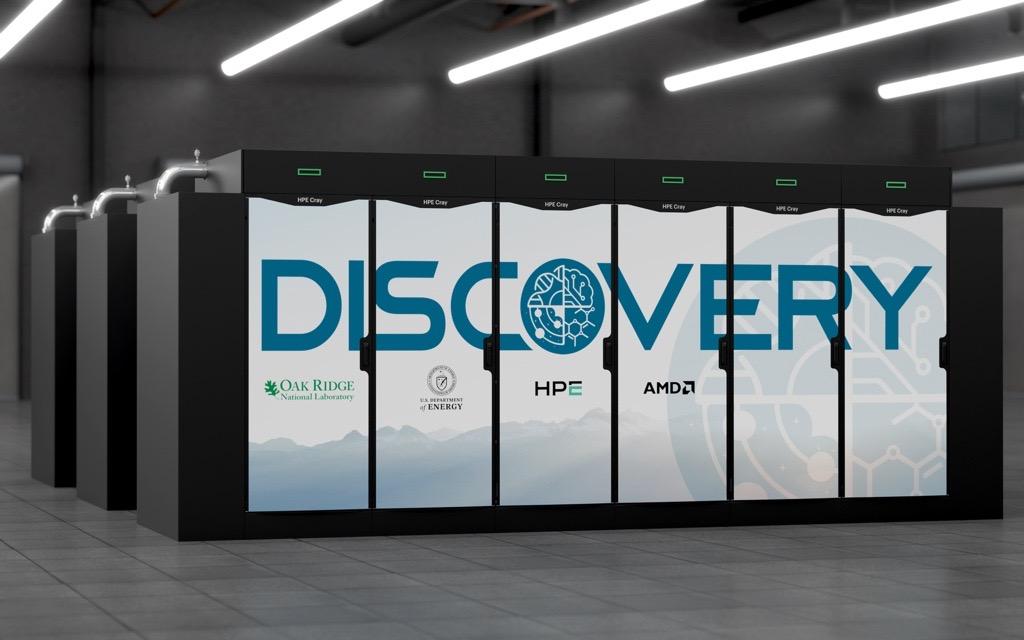The U.S. Department of Energy (DOE) announced Discovery and Lux, two breakthrough AI supercomputers that promise to advance America’s leadership in AI, high-performance computing (HPC), and scientific discovery.
The supercomputing system at Oak Ridge National Laboratory (ORNL) is poised to redefine the boundaries of scientific research, national security, and technological innovation.
By combining unprecedented computing power and advanced AI capabilities, Discovery and Lux promise to transform the way scientists model complex systems, analyze massive data sets, and solve some of the nation’s most pressing technological challenges.
Driving the next era of AI science
More than just faster computers, Discovery and Lux represent a new paradigm in how AI and science intersect.
Designed and built by Hewlett Packard Enterprise (HPE) and AMD, the machine enables scientists to accelerate discoveries in areas ranging from clean energy to advanced manufacturing, medicine, and cybersecurity.
Discovery is led by HPE and the AMD-led Lux system integrates Oracle Cloud Infrastructure (OCI) as part of the Lux AI Cluster, giving researchers access to unprecedented computing power both on-site and in the cloud.
Commenting on the breakthrough AI supercomputer, Energy Secretary Chris Wright said: “Winning the AI race will require new and creative partnerships that bring together the brightest minds and industry that American technology and science has to offer.
“That’s why the Trump administration is announcing the first example of a new common sense approach to computing partnerships with Lux and Discovery as part of a competitive procurement process.”
“Together with AMD and HPE, we are bringing new capacity online faster than ever before, turning shared innovation into national power and proving America leads when public and private partners build together.”
Discovery: Leap beyond the frontier
The Discovery system represents a significant upgrade from ORNL’s current flagship supercomputer, Frontier, which first broke the exascale barrier in 2022.
Discovery, scheduled to be available in 2028, will blend traditional supercomputing with cutting-edge AI and quantum computing research to outperform the frontier on every performance metric.
At its core is the new HPE Cray Supercomputing GX5000, powered by AMD’s upcoming EPYC™ ‘Venice’ processor and Instinct™ MI430X GPU.
The system’s next-generation architecture will enable scientists to simulate, model, and analyze data at record speeds.
Combined with an innovative Distributed Asynchronous Object Storage (DAOS)-based platform, Discovery is expected to provide unparalleled scalability and reliability for complex scientific workloads.
Accelerate discovery across disciplines
Discovery’s AI-driven computing capabilities enable researchers to generate insights previously thought impossible.
The system is expected to play a pivotal role in the nuclear energy transformation by improving safety and reducing costs, creating AI-powered digital twins for personalized medicine, and dramatically shortening aerospace design cycles from years to months.
At its core, Discovery is built to make “gold standard science” faster, more accessible, and more impactful than ever before.
Lux: Expanding AI capabilities in the near term
Arriving in early 2026, the Lux AI cluster will enhance DOE’s near-term AI capabilities and accelerate advances in fusion energy, quantum materials, advanced manufacturing, and power grid resiliency.
The system uses AMD’s Instinct™ MI355X GPU, EPYC™ CPU, and Pensando™ networking technology, all built into HPE’s ProLiant Compute XD685 framework.

Lux provides a secure, scalable foundation for AI research across national laboratory networks, supporting large-scale training and distributed inference.
It also serves as a testing ground for integrating cloud-based AI solutions with physical supercomputing infrastructure. This model is expected to guide DOE’s next-generation computing initiatives.
Drawing on the future of supercomputing
ORNL’s legacy in high performance computing dates back 20 years with leader-class machines such as Jaguar, Titan, Summit, and Frontier, each of which were the world’s fastest in their time.
Discovery and Lux continue that tradition, placing the United States at the forefront of global innovation in AI supercomputers and high-performance scientific computing.
By combining world-class hardware and deep expertise across national labs and industry partners, Discovery and Lux will serve as engines of innovation for decades to come.
As the race for AI supercomputers intensifies around the world, DOE’s bold investment sends a clear message that America intends to lead the way.
Source link

